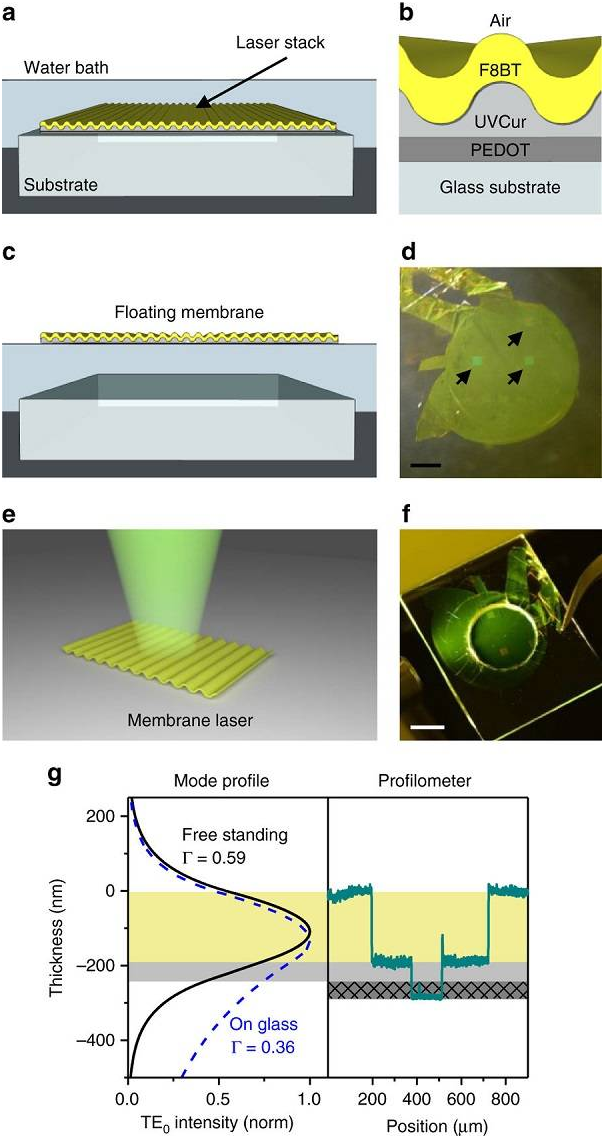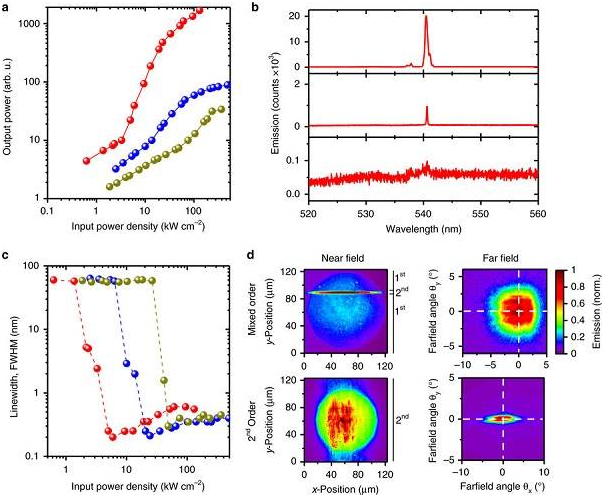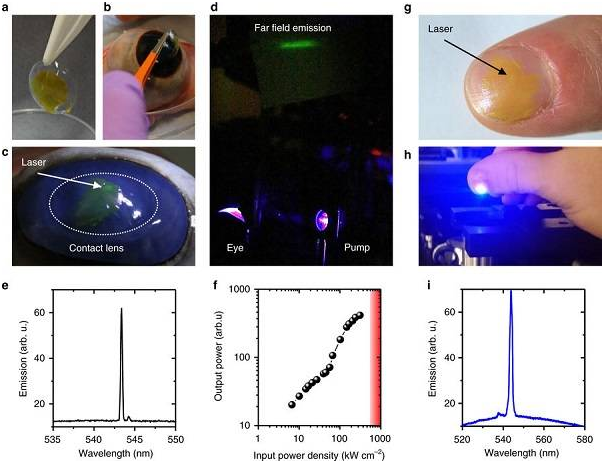
UK developed an organic distributed feedback laser
source:Laserfair
release:Nick
keywords: semiconductor laser organic distributed feedback laser
Time:2018-06-14
Recently, Professor Malte C Gather's group at the University of St Andrews, UK, obtained a kind of organic distributed feedback laser based on polymer film, unsupported and ultra-thin, through a simple manufacturing method. This laser is less than 500 nm, ultra-light (m/A < 0.5 gm-2), and has excellent mechanical flexibility. This work was published in Nature Communications under the title "Flexible and Ultra-Lightweight Polymer Membrane Lasers."
Figure 1. Thin Film Laser Fabrication and Physical Properties

(a). The laser array is immersed in water;
(b). The composition of the laser array;
(c). Graphic floating film
(d). Floating film
(e). Vertical laser emission of a second-order DFB laser film;
(f). Thin film laser maps;
Figure 2. Characterization of Thin Film Lasers

(a). Input-output properties of lasers of different materials;
(b). Emission spectra of thin-film lasers based on F80.9BT0.1;
(c). Spectral linewidth vs device input energy density;
(d). Near-field and far-field launches;
Figure 3. Application of Thin Film Laser Banknote Security

Figure 4. Thin Film Lasers for Wearable Safety Tags

summary
In this work, the authors reported that a simple distributed fabrication method was used to obtain a polymer distributed thin-film, unsupported and ultra-thin organic distributed feedback laser. This laser is less than 500 nm, ultra-light (m/A < 0.5 gm-2), and has excellent mechanical flexibility.
- RoboSense is to Produce the First Chinese Multi-beam LiDAR
- China is to Accelerate the Development of Laser Hardening Application
- Han’s Laser Buys Canadian Fiber Specialist CorActive
- SPI Lasers continues it expansion in China, appointing a dedicated Sales Director
- Laser Coating Removal Robot for Aircraft
 FISBA exhibits Customized Solutions for Minimally Invasive Medical Endoscopic Devices at COMPAMED in
FISBA exhibits Customized Solutions for Minimally Invasive Medical Endoscopic Devices at COMPAMED in New Active Alignment System for the Coupling of Photonic Structures to Fiber Arrays
New Active Alignment System for the Coupling of Photonic Structures to Fiber Arrays A new industrial compression module by Amplitude
A new industrial compression module by Amplitude Menhir Photonics Introduces the MENHIR-1550 The Industry's First Turnkey Femtosecond Laser of
Menhir Photonics Introduces the MENHIR-1550 The Industry's First Turnkey Femtosecond Laser of Shenzhen DNE Laser introduced new generation D-FAST cutting machine (12000 W)
more>>
Shenzhen DNE Laser introduced new generation D-FAST cutting machine (12000 W)
more>>





